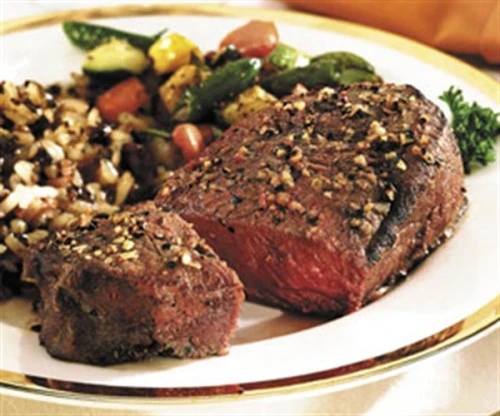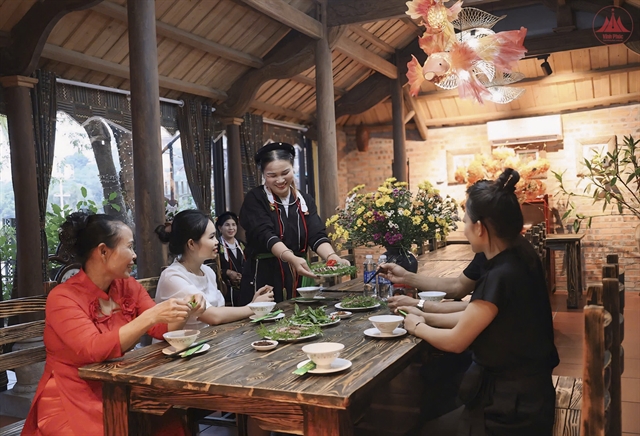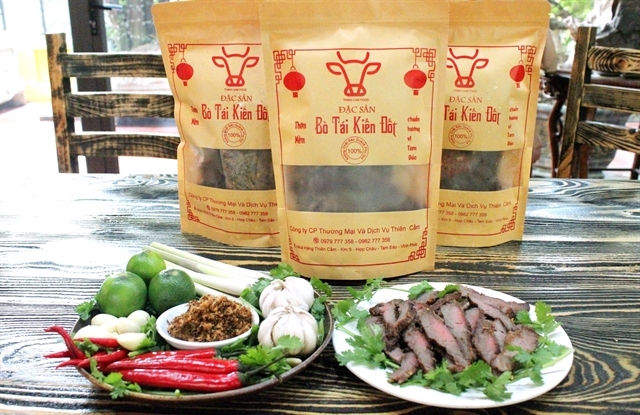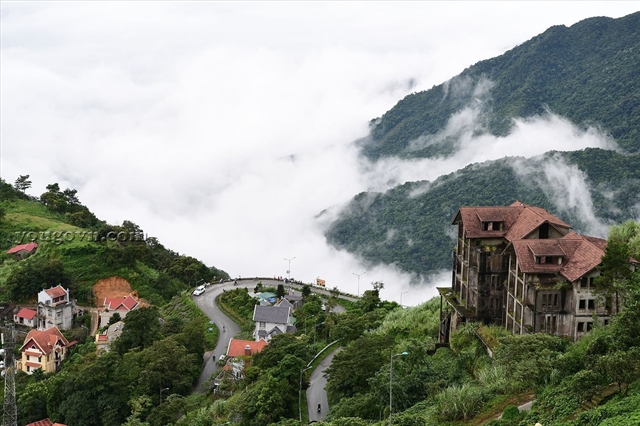 Life & Style
Life & Style

Thu Hà
"Ant-bite rare beef", known as bò tái kiến đốt in Vietnamese, is a unique specialty of the Sán Dìu ethnic group in Tam Đảo, Vĩnh Phúc Province, which is now part of Phú Thọ Province. The dish, where raw beef is stung by forest ants and slightly grilled over charcoal, has impressed both local and foreign visitors with its distinctive flavour and preparation.
Tam Đảo resident Nguyễn Thị Lan, 68, told Việt Nam that the complicated process means it is not a common dish in daily meals. However, a number of restaurants and hotels now serve it to guests, helping enrich the province’s culinary culture.
Asked about its origins, Lan said the dish is found in mountainous areas where locals have access to nature and fresh ingredients such as free-range beef or forest ants.
 |
| 'Bò tái kiến đốt' (ant-bite rare beefsteak) attracts a lot of local and foreign food lovers. Photo baodantoc.vn |
Lan said the ant, with its venom causing itching, contains formic acid, an important element in preparing the rare beef and giving the dish its distinctive flavour. She added that these fire ants often live in large colonies on woody trees in the forests.
“In the past my grandfather had to wear a protective raincoat and other gear to find a big ant nest and hang a chunk of fresh beef under it. He had to wait until the ants arrived and bit the beef. After half an hour or more, when the beef was covered with ants and had turned a light pink colour, he used a long iron hook to retrieve it and put it into a bag to bring home,” said Lan, noting that the beef was then washed carefully and marinated with spicy, special herbs before grilling.
Unlike in the past, today’s cooks often hire experienced ant hunters to collect fire ants for home preparation.
 |
| A group of visitors from Hà Nội are enjoying 'bò tái kiến đốt' at a restaurant in Tam Đảo. Photo dantoc.vietnamtourism.gov.vn |
The makers have to choose beef shank or tenderloin, clean it carefully with salt water, cut it into hand-sized pieces. The cuts should be neither too thin nor too thick, and are then marinated with spices and herbs.
The makers then pour live ants onto the beef, which is arranged on a tray.
“They immediately flock to the beef and bite it, making it softer with a special flavour,” said Lan.
She added, however, that the process of ant biting requires special care to ensure the beef does not become bitter from too much acid.
 |
| The specialty is available in Tam Đảo Commune for visitors to taste and buy as a local delicacy. Photo danviet.vn |
Lan said when the beef turns light pink, becomes firmer and releases its characteristic fragrance, it means the process is complete.
Lê Văn Đạt, a restaurant owner, said he often grinds the ants with water, strains the liquid and soaks the beef in it.
“This way is simpler, more hygienic and safe, but many foodies prefer the direct ant-biting method. They often order the dish in advance before arriving at my restaurant,” Đạt said.
After being bitten by ants, the beef is cut into thin pieces and mixed with chopped fresh herbs, chilli, minced garlic, ginger, lemongrass, fish sauce, sugar, lime or kumquat juice, and topped with roasted peanuts, said Đạt.
He noted that it is more enjoyable when dipped in a sour and sweet sauce or chilli juice, and eaten with rice crackers -- a perfect snack for sharing drinks and conversations with friends and family.
 |
| Tam Đảo is not only famous for its ant-bite rare beef but also for its pristine natural beauty. Photo moitruong.net.vn] |
Đạt said the dish is not only a specialty but also part of Vĩnh Phúc's folk culture, reflecting the continuous creativity of local people in using natural ingredients to create a genuine yet remarkable culinary experience.
He said the dish was recognised among the top 100 specialties of Việt Nam by VietKings in 2022. VNS




